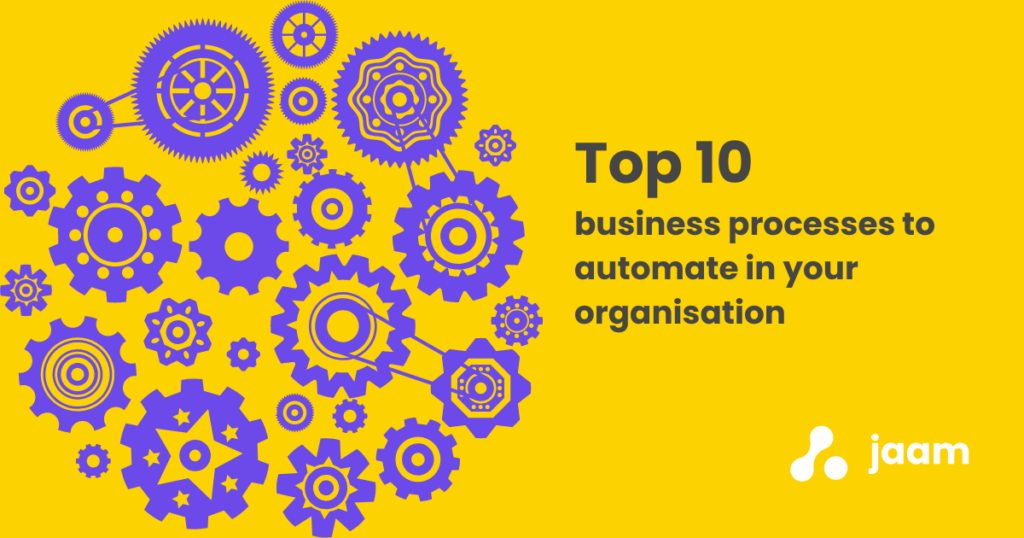
At its core, automation is the use of technology to perform work that would traditionally require human intervention. It’s a powerful tool that businesses of all sizes can embrace to make processes leaner, faster, and more accurate.
Deloitte’s 2022 Global Intelligent Automation Survey found that organisations worldwide are moving up the automation maturity curve. This trend is driven by the many benefits of automation, including boosting operational efficiency, cutting down costs, honing accuracy, and refining the customer experience.
Automation’s role in the human workforce
It’s essential to note that automation is not about replacing humans. Rather, it’s a strategy for allowing people to focus on the work they do best. By taking repetitive tasks off their plates, teams in any department can focus more time on work that requires complex decision-making, innovative or creative thinking, empathy, and other uniquely human skills. In other words, automation takes care of the mundane, so people can focus on the extraordinary.
A survey of 6,400 workers from across the world commissioned by UiPath, a leader in enterprise automation software, found that 83% of those who use business automation solutions believe these tools can help tackle burnout and enhance job satisfaction.
Business processes that are ideal for automation
When looking for automation opportunities in your business, the first step is to identify the tasks that are routine, time-consuming, and repetitive. These tend to follow a set pattern or process, and need to be done over and over again. Listed below are some common examples.
1. Customer service:
Customer service is a crucial part of any business, and automation can be a great way to streamline it. Chatbots, for instance, can handle common enquiries 24/7, delivering instant responses and reducing wait times. Human agents are then free to focus on more complex or sensitive customer interactions, enhancing overall service quality.
2. Data entry:
Data entry can be tedious and error-prone when performed manually. Automation tools can handle large volumes of data input with high accuracy, reducing errors and freeing up valuable time for employees to focus on tasks that require more critical thinking.
3. Invoice processing:
Manually processing invoices can be time-consuming and susceptible to errors. Systems built on intelligent automation technologies can manage the whole process, from receiving invoices to validating, matching, and making payments. This not only speeds up the process but also enhances accuracy and financial compliance.
4. Email marketing:
Automated email marketing systems can schedule campaigns and segment audiences based on specific criteria. They can also help to draft personalised content to improve engagement, as well as track and analyse user interactions to help optimise campaign strategies.
5. Inventory management:
Automation can help track inventory levels in real-time, signalling when stocks are low or even automatically reordering products. This can help businesses avoid costly overstocking or damaging out-of-stock situations, ensuring smoother operations and better customer satisfaction.
6. Sales reporting:
Automated reporting tools can collect, compile, and analyse sales data in real time. This allows for timely decision-making, accurate forecasting, and better understanding of sales trends and customer behaviour.
7. HR onboarding:
Automated onboarding processes can provide a consistent and efficient experience for new hires. This may include sending welcome emails, setting up necessary accounts, initiating training programmes, and more. With automation speeding up the process, new employees can quickly become productive members of the team.
8. IT service requests:
Automating common IT service requests, like password resets or software updates, can significantly reduce the workload of IT teams. This allows them to focus on more complex issues or strategic initiatives, increasing overall IT service efficiency.
9. Appointment scheduling:
For appointment-based businesses, automated scheduling systems can manage bookings, send reminders to customers, and adjust schedules based on cancellations or changes. This can reduce no-shows and improve customer service.
10. Complaints handling:
Automation can work alongside humans to streamline this crucial process. For example, automated systems can be set up to acknowledge receipt of a complaint, categorise the issue based on the nature of the complaint, and even suggest potential solutions if the problem is commonly encountered. However, resolving complaints often requires empathy, complex problem-solving, and sometimes negotiation, which are areas where human intervention remains superior. Automation can handle the routine steps, while human experts step in to manage the more complex components. This approach allows businesses to respond both promptly and empathetically.
All processes can benefit from automation to a certain extent
When you dive into the details of most work processes, you’ll find tasks that are repetitive, predictable, or rule-based, making them ideal candidates for automation. This doesn’t necessarily mean that the entire process can or should be automated, but rather that automation solutions can work alongside humans to improve efficiency.
For example, in project management, while strategic decision-making and creative problem-solving are best left to humans, components like progress tracking, report generation, and reminders for upcoming deadlines can be automated to free up time for more value-added work.
Set it but don’t forget it: driving ongoing process improvement
As you integrate automation technologies into various business processes, an added benefit emerges from the digital nature of these systems: the ease of tracking progress and performance. Unlike manually-driven processes, which often require extensive effort to evaluate, automated processes leave a clear digital footprint that can be monitored in real time.
You can easily track the speed of task execution, the accuracy of outcomes, and the overall efficiency of your automation-enabled workflows. With these insights at hand, strategic adjustments can be made to improve business agility. Whether it’s tweaking the rules of an automated task or improving the training of a machine learning algorithm, this ability to iterate and improve is a significant advantage of automation.
Doing business better and making work more fulfilling
In all these ways, automation is more than a mere productivity tool. It also serves as a catalyst for growth and improvement in any business. When it is thoughtfully implemented, employees also stand to gain, with fewer mundane tasks to do, and more meaningful work to focus on.




